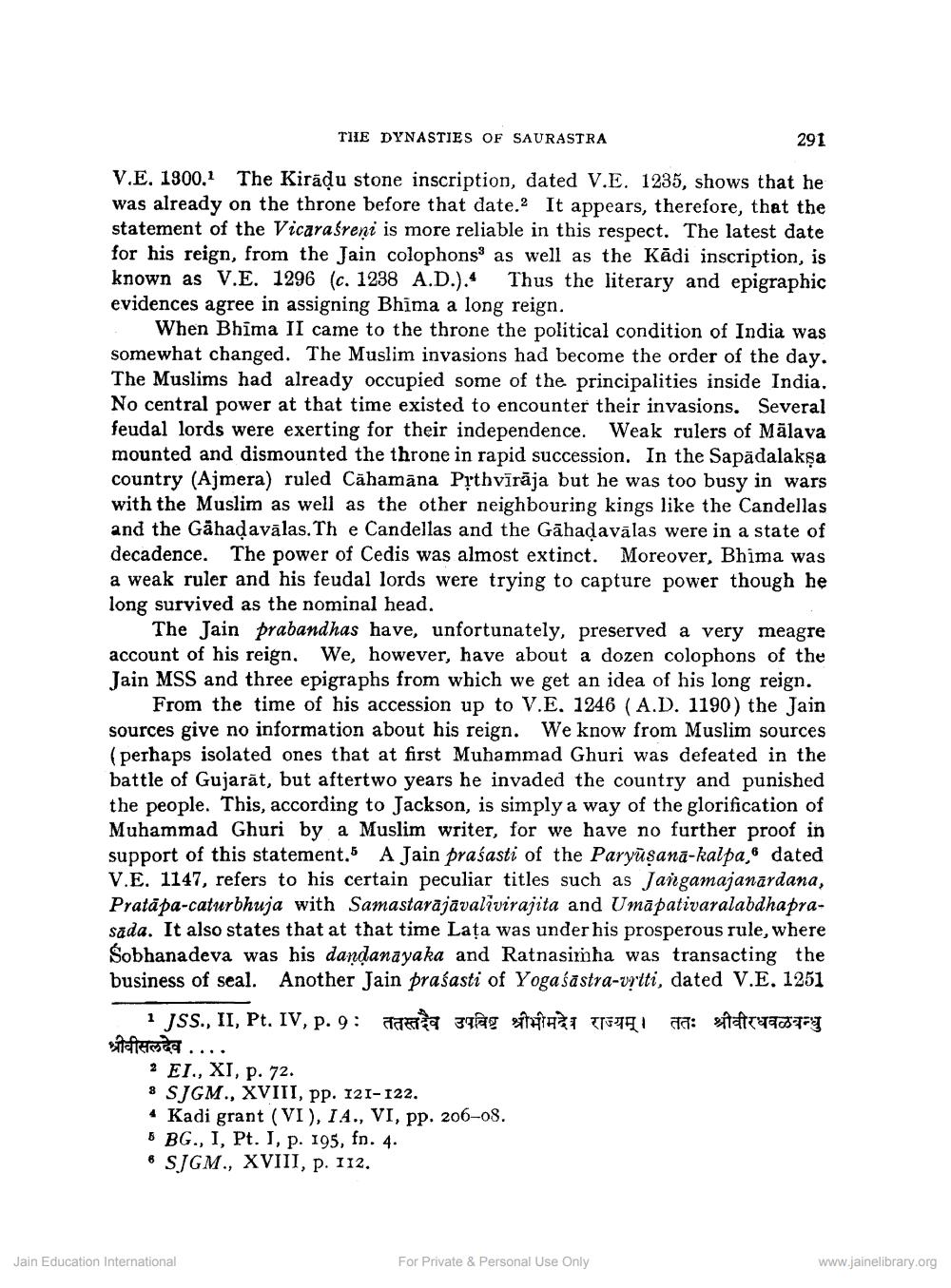________________
THE DYNASTIES OF SAURASTRA
291
V.E. 1900.1 The Kirāļu stone inscription, dated V.E. 1235, shows that he was already on the throne before that date.2 It appears, therefore, that the statement of the Vicarabreni is more reliable in this respect. The latest date for his reign, from the Jain colophons as well as the Kādi inscription, is known as V.E. 1296 (c. 1238 A.D.). Thus the literary and epigraphic evidences agree in assigning Bhima a long reign.
When Bhima II came to the throne the political condition of India was somewhat changed. The Muslim invasions had become the order of the day. The Muslims had already occupied some of the principalities inside India, No central power at that time existed to encounter their invasions. Several feudal lords were exerting for their independence. Weak rulers of Mālava mounted and dismounted the throne in rapid succession. In the Sapädalaksa country (Ajmera) ruled Cahamāna Pythvīrāja but he was too busy in wars with the Muslim as well as the other neighbouring kings like the Candellas and the Gähadavālas. Th e Candellas and the Gāhadavālas were in a state of decadence. The power of Cedis was almost extinct. Moreover, Bhima was a weak ruler and his feudal lords were trying to capture power though he long survived as the nominal head.
The Jain prabandhas have, unfortunately, preserved a very meagre account of his reign. We, however, have about a dozen colophons of the Jain MSS and three epigraphs from which we get an idea of his long reign.
From the time of his accession up to V.E. 1246 (A.D. 1190) the Jain sources give no information about his reign. We know from Muslim sources (perhaps isolated ones that at first Muhammad Ghuri was defeated in the battle of Gujarat, but aftertwo years he invaded the country and punished the people. This, according to Jackson, is simply a way of the glorification of Muhammad Ghuri by a Muslim writer, for we have no further proof in support of this statement. A Jain prasasti of the Paryūsana-kalba, 6 dated V.E. 1147, refers to his certain peculiar titles such as Jangamajanardana, Pratāpa-caturbhuja with Samastarājāvalivirajita and Umāpativaralabdhaprasada. It also states that at that time Lața was under his prosperous rule, where Sobhanadeva was his dandanayaka and Ratnasimha was transacting the business of seal. Another Jain praśasti of Yogaśāstra-vrtti, dated V.E. 1251
IJSS., II, Pt. IV, p. 9: Jana Tag A E71 Ja: TOTI श्रीवीसलदेव
2 EI., XI, p. 72. 8 SJGM., XVIII, pp. 121-122. - Kadi grant (VI), IA., VI, pp. 206-08. 6 BG., I, Pt. I, p. 195, fn. 4. & SJGM., XVIII, p. 112.
Jain Education International
For Private & Personal Use Only
www.jainelibrary.org




